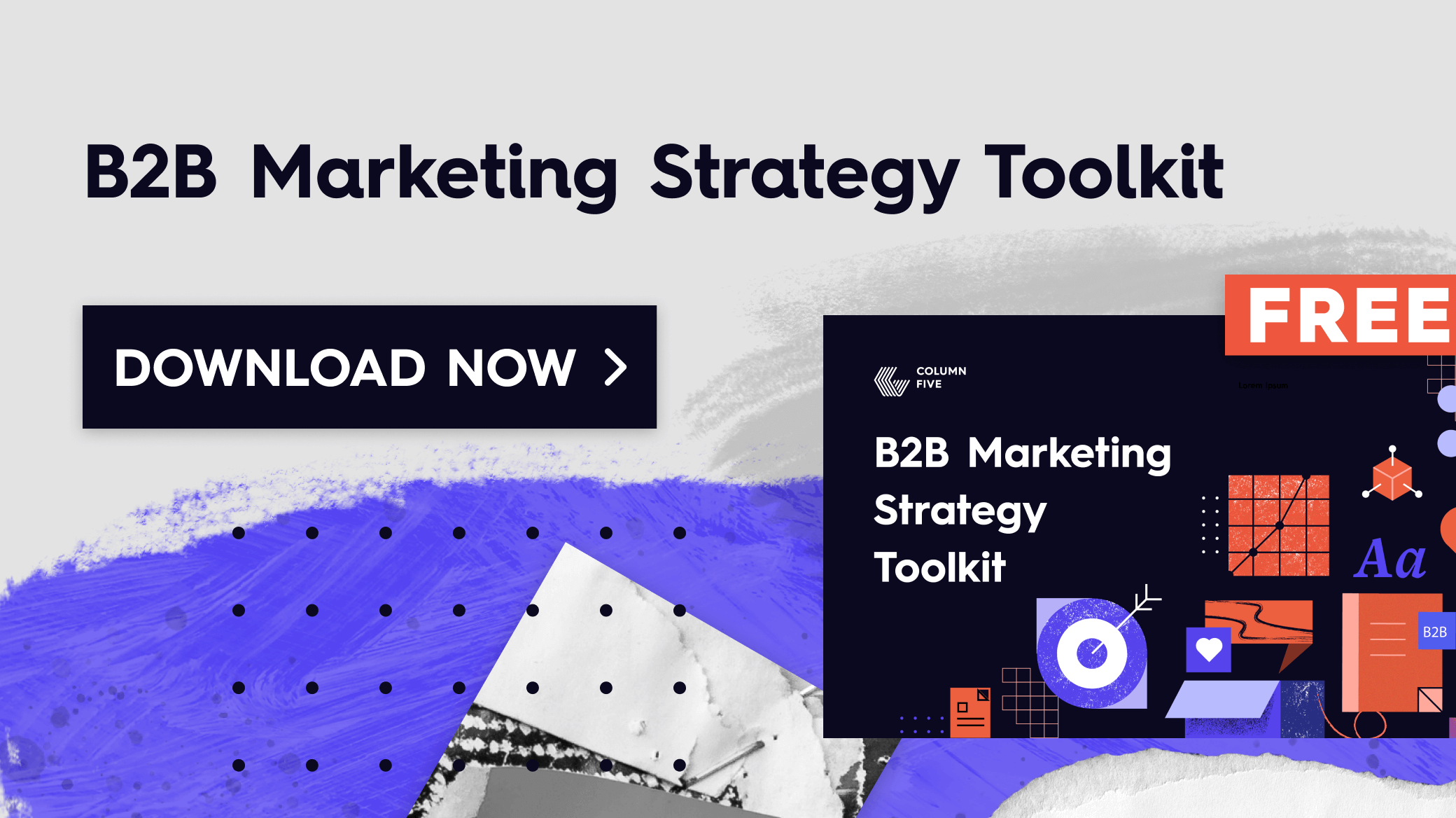We’ve already talked about why sales enablement gives you the best marketing ROI. And there’s a reason it’s an increasingly important part of our clients’ strategies. But although many organizations have identified a need for a strong sales enablement strategy, we see a lot of people fumble the execution. This can be due to a variety of reasons, but we tend to see the same mistakes over and over again.
We want to help your sales and marketing teams win together, but you can only make that happen if you’re aligned toward the same goal. Not sure if you’re doing that correctly? Today, we’re breaking down the four most common mistakes we see, plus tips to help you build a sales enablement strategy that works.

4 Biggest Sales Enablement Strategy Mistakes
From a lack of education to organizational issues, there are several reasons your sales enablement efforts might not be as successful as they could be. If you’re dealing with any of the following issues, work to unite your team to alter your course of action.
Mistake 1: You have an improper definition of sales enablement.
A strong sales enablement strategy is, ultimately, a long-term approach to improving sales performance via the right tools, content, and training. Marketing plays a crucial role in this process, but it is a constantly evolving practice, as both teams work to keep up with changing markets and customer needs.
The problem we often see is that organizations view sales enablement as a specific tactic (or, really, just a few presentation decks). This is a myopic and shortsighted view of what you’re really trying to achieve, and it’s why you might struggle to make the larger organizational shifts needed to make it work.
Sales enablement spans so many things, including:
- Sales training and development
- Content development
- Sales tools and technology
- Sales process optimization
- Collaboration between sales and marketing
- Performance measurement and analysis
- Feedback loops
- Customer insights
If you’re only addressing one part of this ecosystem, you won’t set yourself up for true success.
Tip: To deepen your understanding of the full span of sales enablement, see our deep dive into what it is and how it can transform your business.
Mistake 2: Your marketing and sales teams aren’t talking—the way they should.
This might be the most common problem we see clients face. (We’ve also dealt with it in our own agency.)
Marketing and sales are often siloed in their own departments, so they don’t have an active and engaged relationship. And in the worst cases, they actually have an antagonistic relationship. (Trust us, we’ve seen it.)
If you don’t have clear and constant lines of communication, you can’t work toward the same goal or benefit from each other’s insights. This causes a whole slew of problems, including:
- Miscommunication
- Misaligned goals
- Poor lead quality
- Lost opportunities
- Wasted resources
- Difficulty tracking ROI
- Lack of accountability
All in all, it ain’t good. If you want to craft a sales enablement strategy that actually works, you need your teams to talk—a lot. This is the only way to get the information you need, create the content that really supports sales, glean the customer insights that support marketing, and more.
Tip: Create standing meetings for both sales and marketing to connect, share insights, bring sales into marketing brainstorms (when and where appropriate), and report success. It also helps to appoint go-to liaisons between both departments to address issues or foster more collaboration. (For more ideas to connect your teams, see our tips to bridge sales and marketing.)
Mistake 3: You aren’t measuring the efficacy of sales enablement.
Even if you have a well thought-out strategy and team participation, if you don’t know how your efforts are performing, you can’t improve. Too many teams rely on purely qualitative theory. We’ve been guilty of this ourselves, but it’s important to remember that one good sales call doesn’t mean your whole buyer journey is working the way it should.
To truly understand the impact of your sales enablement strategy, you need quantitative data.
Tip: Document key performance indicators (KPIs) such as conversion rates, deal size, and sales cycle length to determine how sales enablement is impacting your bottom line. Share these insights with your teams to find weak points in the system or opportunities to improve.
Mistake 4: Your sales enablement content isn’t tied to your main brand story.
Consistency is key to successful sales enablement, but one of the most pervasive problems is when your marketing story and sales story don’t align. When this happens, you’re likely to confuse, surprise, or downright repel your prospective customers.
Although sales messaging is more specific, sales often gets so bogged down in product features or benefits that they forget to reinforce the overall value that your solution provides. (This is especially important when you’re trying to differentiate your brand in the market, as your brand story is one of the last remaining competitive advantages.)
Worse, when your sales content doesn’t reflect your brand’s core values, mission, and positioning, it can erode customer confidence and make it more difficult to establish a meaningful connection with the target audience.
Tip: Reassess your buyer journey and clarify the key messaging you need to deliver at every stage. This will ensure your journey is consistent and cohesive, creating a superior brand experience that makes it easier to close the deal.
How to Support Your Sales Enablement Going Forward
Obviously, no sales enablement strategy is perfect straight out of the gate. It takes time to evolve, problem-solve, and optimize as you go forward. But there are a few things to keep in mind as you continue to refine your efforts.
- Understand the real difference between sales and marketing content. The line can be blurry, so educate your team about the purpose of each.
- Create the right type of content. Find out how marketing and sales can work together to create a healthy library of resources that supports sales.
- Employ AI to improve efficiency. There are all sorts of ways that AI can help improve sales content, as well as the customer experience. See our guide to AI marketing for more ideas.
Most importantly, keep the lines of communication open between your departments. It’s the only way to cultivate a culture of collaboration, track progress, and build a symbiotic system that gives everybody better results.
(P.S. If you need a partner to help you tackle either marketing or sales enablement content, find out how to find the right content agency or start your search with us. We’d be happy to help you bring your teams together.)





